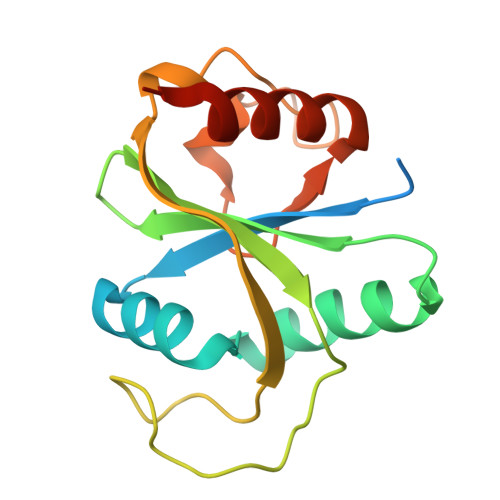Discovery of YTHDF2 Ligands by Fragment-Based Design.
Invernizzi, A., Nai, F., Bedi, R.K., Vargas-Rosales, P.A., Li, Y., Bochenkova, E., Herok, M., Zalesak, F., Caflisch, A.(2025) ACS Bio Med Chem Au 5: 753-765
- PubMed: 40860041
- DOI: https://doi.org/10.1021/acsbiomedchemau.5c00099
- Primary Citation of Related Structures:
9QEL, 9QEM, 9QEO, 9QFL, 9QIU - PubMed Abstract:
N 6 -Adenosine methylation is the most abundant modification of mRNA. The three members of the YTH domain family proteins (YTHDF1-3) recognize in the cytoplasm the m 6 A-RNA modification. We screened a library of about 500,000 fragments (i.e., molecules with 11-20 non-hydrogen atoms) by docking into YTHDF2, which resulted in the identification of six active compounds among 47 tested in vitro (hit rate of 13%). The acquisition of 28 analogues of the docking hits provided an additional set of 10 active compounds (IC 50 < 100 μM). Protein crystallography-guided optimization of a ligand-efficient fragment by the synthesis of 32 derivatives culminated in a series of YTHDF2 ligands, which show low-micromolar affinity measured by a fluorescence polarization (FP) assay and a homogeneous time-resolved fluorescence-based (HTRF) assay. The series is characterized by very favorable ligand efficiency (of about 0.3-0.4 kcal/mol per non-hydrogen atom). Compound 23 binds to YTHDF2 according to the FP and HTRF assays with a K d value of 1.3 μM and an IC 50 value of 11 μM, respectively, and it is selective against all of the other YTH reader proteins. Several compounds of the series bind to the three YTHDF proteins with similar low-micromolar affinity, while they are less potent for YTHDC1 and YTHDC2. In contrast, compounds 17 and 30 bind also to YTHDC2, with K d of 6.3 and 4.9 μM, respectively. We also disclose six crystal structures of YTHDF2 in the complex with the fragments identified by docking.
- Department of Biochemistry, University of Zurich, CH-8057 Zurich, Switzerland.
Organizational Affiliation:




















